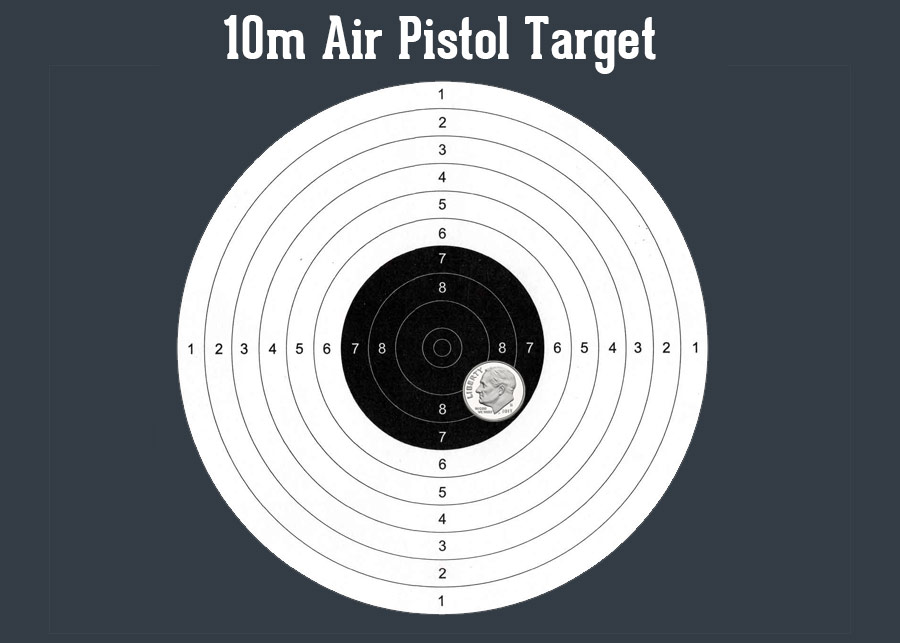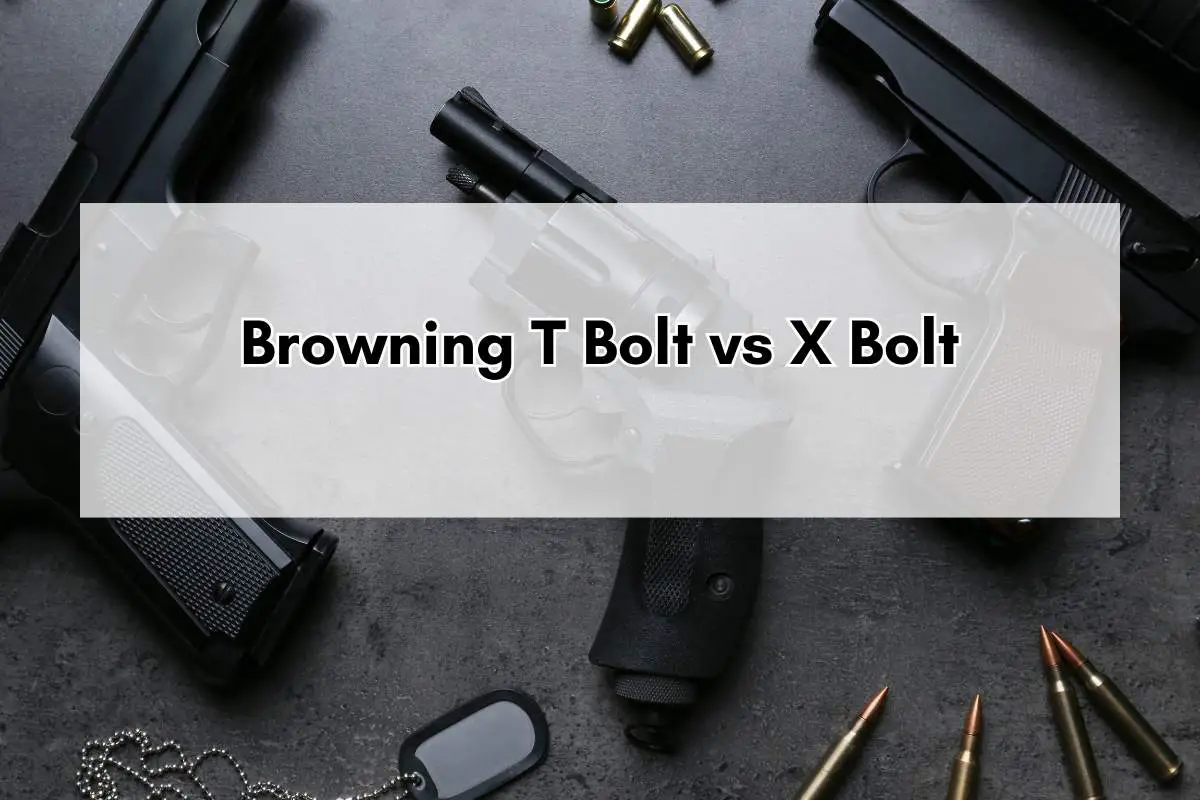Air pistol targets have a standard size of 17 cm in diameter. The bullseye measures 11.5 mm in diameter.
Air pistol shooting is a popular sport that requires precision and control. The targets used in this sport are designed to challenge shooters’ accuracy. Understanding the dimensions of these targets is crucial for both beginners and experienced shooters. The standard size ensures a consistent level of difficulty, making competitions fair and standardized.
These targets are used in various events, from local matches to international competitions. Proper knowledge of target sizes helps shooters practice effectively and improve their skills. Whether you’re aiming for the bullseye or just starting out, knowing the exact dimensions of air pistol targets is essential for success.
Credit: en.m.wikipedia.org
Introduction To Air Pistol Targets
Air pistol targets play a vital role in the sport of air pistol shooting. These targets help shooters improve their aim and accuracy. Knowing the size and purpose of these targets can enhance your shooting experience.
Purpose Of Air Pistol Targets
The primary purpose of air pistol targets is to provide a clear and consistent aiming point. They help shooters practice their skills and improve their precision. Most air pistol targets are designed with specific scoring zones. These zones help measure accuracy.
Air pistol targets also serve as a training tool. They help shooters identify areas for improvement. By using these targets, shooters can develop better techniques.
History Of Air Pistol Shooting
Air pistol shooting has a rich history. It dates back to the 19th century. The sport has evolved significantly over the years. Early air pistols were simple and less accurate. Modern air pistols are highly advanced and precise.
The sport gained popularity in the mid-20th century. Competitions and championships began to emerge. Today, air pistol shooting is a recognized Olympic sport. It attracts shooters from around the world.
| Aspect | Details |
|---|---|
| Target Size | Typically 17 cm in diameter |
| Scoring Zones | 10 concentric circles |
| Material | Paper or cardboard |
Understanding the history and purpose of air pistol targets can enhance your shooting experience. Practice regularly to achieve better results.
Standard Target Sizes
Understanding the standard target sizes is crucial for air pistol enthusiasts. Different distances have specific target sizes to ensure fair competition and accurate practice. This section delves into the dimensions and specifications of 10-meter air pistol targets.
10-meter Air Pistol Targets
The 10-meter air pistol target is widely used in competitions. It is designed to provide a consistent challenge for shooters. The target has specific dimensions set by international standards.
Dimensions And Specifications
Here are the key specifications of a 10-meter air pistol target:
| Feature | Specification |
|---|---|
| Target Distance | 10 meters |
| Target Diameter | 17 cm |
| Black Center Diameter | 11.5 cm |
| 10-Ring Diameter | 11.5 mm |
The center of the target is black, while the outer rings are white. This contrast helps shooters aim more accurately. The 10-ring is the smallest and most challenging part to hit.
The following are the ring diameters:
- 1-Ring: 155.5 mm
- 2-Ring: 139.5 mm
- 3-Ring: 123.5 mm
- 4-Ring: 107.5 mm
- 5-Ring: 91.5 mm
- 6-Ring: 75.5 mm
- 7-Ring: 59.5 mm
- 8-Ring: 43.5 mm
- 9-Ring: 27.5 mm
- 10-Ring: 11.5 mm
These dimensions ensure a standard practice environment for all shooters. Consistency in target sizes helps improve accuracy and skills over time.
Target Zones Explained
Understanding the target zones of air pistol targets is crucial for improving accuracy. In this section, we will delve into the specifics of the scoring rings and the bullseye, including the inner rings.
Scoring Rings
The scoring rings on air pistol targets help in measuring precision. These rings are concentric circles, each with different point values. The outermost ring is usually worth one point. As you move inward, the point values increase. A typical air pistol target has ten scoring rings.
| Ring | Points |
|---|---|
| 1 | 1 |
| 2 | 2 |
| 3 | 3 |
| 4 | 4 |
| 5 | 5 |
| 6 | 6 |
| 7 | 7 |
| 8 | 8 |
| 9 | 9 |
| 10 | 10 |
Bullseye And Inner Rings
The bullseye is the center of the target, offering the highest points. It is the smallest ring and requires extreme accuracy to hit. Inside the bullseye, there are inner rings. These rings further divide the bullseye for more precise scoring. Hitting closer to the center of the bullseye awards more points.
- The bullseye is worth ten points.
- Inner rings can award up to 10.9 points.
Understanding these zones helps shooters aim better. Knowing the point values and the importance of each ring can improve scoring.
Materials And Durability
Air pistol targets come in various materials. The choice of material affects durability. Knowing about materials helps you choose the right target.
Paper Targets
Paper targets are common for air pistol shooting. They are affordable and easy to replace. These targets usually have a bullseye design. They are great for practice sessions. Paper targets are lightweight and portable.
Paper targets can be found in different sizes. The standard size is 7 x 9 inches. They can be used indoors or outdoors. Paper targets are not very durable. They wear out quickly with use.
Metal And Reactive Targets
Metal targets are more durable than paper targets. They are made from steel or aluminum. These targets can last for many years. Metal targets are suitable for advanced shooters.
Metal targets come in different shapes. Some popular shapes are silhouettes and spinners. These targets provide immediate feedback. You can hear a sound when you hit them. Metal targets are often used in competitions.
Reactive targets are a type of metal target. They move or make noise when hit. Reactive targets add excitement to shooting practice. They help improve accuracy and reaction time.
| Target Type | Material | Durability |
|---|---|---|
| Paper Targets | Paper | Low |
| Metal Targets | Steel/Aluminum | High |
| Reactive Targets | Steel/Aluminum | High |
Choosing The Right Target
Selecting the correct air pistol target is crucial for improving your aim. Targets come in various sizes, designed for different skill levels and purposes. Understanding which target to choose can significantly impact your training and competition results.
Skill Level Considerations
Beginners should start with larger targets. Larger targets make it easier to hit the bullseye and build confidence. As skills improve, smaller targets can be introduced. This helps in honing precision and accuracy.
For advanced shooters, smaller targets present a greater challenge. Smaller targets require more focus and control. They help in perfecting shooting techniques.
Training Vs. Competition
Training targets are often larger and more forgiving. They are designed to help shooters practice without pressure. Competition targets are smaller and adhere to strict regulations. They test the shooter’s skill and precision.
Below is a table comparing training and competition targets:
| Aspect | Training Targets | Competition Targets |
|---|---|---|
| Size | Large | Small |
| Difficulty | Low | High |
| Purpose | Skill-building | Skill-testing |
Choose your targets wisely. Matching the target size to your skill level and purpose can significantly enhance your shooting experience.

Credit: en.m.wikipedia.org
Setting Up Your Shooting Range
Setting up your shooting range is essential for practice. Whether indoor or outdoor, creating a safe, effective space is crucial.
Indoor Vs. Outdoor Setups
Choosing between indoor and outdoor setups depends on your space and preferences. Both have their unique benefits.
| Aspect | Indoor Setup | Outdoor Setup |
|---|---|---|
| Space | Limited space. Ideal for small ranges. | More space. Suitable for longer distances. |
| Weather | Weather-proof. No rain or wind issues. | Weather-dependent. Wind and rain can affect shooting. |
| Lighting | Controlled lighting. Consistent conditions. | Natural light. Can vary throughout the day. |
| Noise | Quieter. Suitable for noise-sensitive areas. | Louder. Noise can be an issue in residential areas. |
Safety Precautions
Safety is the top priority in any shooting range. Follow these precautions to ensure a safe environment:
- Always wear protective gear, including eye and ear protection.
- Ensure the range is clear of obstacles and unauthorized persons.
- Use backstops to catch pellets and prevent ricochets.
- Maintain a safe distance between shooters and targets.
- Follow all local laws and regulations regarding air pistol use.
By setting up your range properly, you create a safe and enjoyable shooting experience. This ensures effective practice and skill improvement.
Tips For Improved Accuracy
Achieving accuracy in air pistol shooting requires practice and focus.
Understanding the correct stance, grip, and breathing techniques can make a significant difference.
Below are some essential tips to help you improve your shooting accuracy.
Stance And Grip
Your stance sets the foundation for a good shot. Stand with your feet shoulder-width apart.
Keep your weight balanced evenly on both feet.
Your grip on the air pistol should be firm yet relaxed.
Follow these steps for a proper grip:
- Hold the pistol with your dominant hand.
- Wrap your fingers around the grip without squeezing too tightly.
- Place your thumb on the opposite side of your fingers.
A correct stance and grip can greatly enhance your stability and accuracy.
Breathing Techniques
Breathing plays a crucial role in shooting accuracy.
Proper breathing helps to steady your aim and reduce movement.
Use these breathing techniques for better control:
- Take a deep breath in through your nose.
- Hold your breath for a few seconds.
- Slowly exhale through your mouth.
- Shoot during the natural pause after exhaling.
Practicing these techniques can help you maintain a steady aim and improve your shooting accuracy.
Maintenance And Storage
Maintaining and storing air pistol targets properly ensures their longevity and performance. This section covers essential tips for preserving target quality and proper storage solutions.
Preserving Target Quality
Regularly check targets for wear and tear. Replace damaged targets promptly to maintain accuracy. Use weather-resistant materials for outdoor targets to prevent damage from rain and sun.
Cleaning targets regularly is crucial. Use a damp cloth to remove dust and dirt. Avoid using harsh chemicals as they can damage the target’s surface.
Proper Storage Solutions
Store targets in a dry and cool place. Moisture can warp and damage them. Use storage boxes or cabinets to keep targets organized and protected.
Avoid stacking heavy objects on top of targets. This prevents bending and warping. Label storage containers to easily find specific targets when needed.
Here’s a quick checklist for target maintenance and storage:
- Check for wear and tear regularly.
- Clean with a damp cloth.
- Use weather-resistant materials.
- Store in a dry, cool place.
- Avoid stacking heavy objects on targets.
- Label storage containers.

Credit: www.airgundepot.com
Frequently Asked Questions
What Is The Standard Size Of Air Pistol Targets?
The standard size of air pistol targets is 17 cm by 17 cm. The bullseye diameter is 11. 5 mm. These dimensions are regulated by the ISSF.
How Far Are Air Pistol Targets Placed?
Air pistol targets are placed at a distance of 10 meters. This distance is standardized by the ISSF for competitions.
What Materials Are Used For Air Pistol Targets?
Air pistol targets are usually made from heavy paper or cardboard. This ensures clear marking of the shots.
Are Air Pistol Targets Used Indoors Or Outdoors?
Air pistol targets are primarily used indoors. This is to ensure consistent environmental conditions for shooting.
Conclusion
Understanding the size of air pistol targets helps improve your aim and performance. Practice regularly to master precision. Always use standardized targets for consistent results. This ensures a fair and enjoyable shooting experience. Keep honing your skills to achieve greater accuracy and confidence.
Happy shooting!

